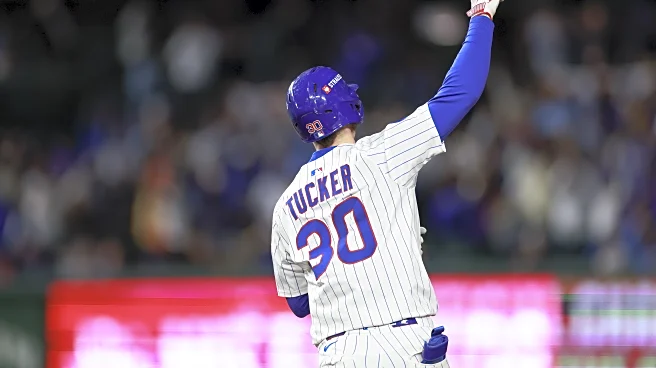What's Happening?
Edwin Diaz, the All-Star closer, is currently navigating free agency and has expressed that there is a '50-50' chance he will return to the New York Mets. Diaz, who opted out of his contract with two years
and $37 million remaining, is exploring his options after a successful season with a 1.63 ERA and 28 saves in 31 opportunities. The Mets have extended a qualifying offer of $22 million to Diaz, which would ensure draft pick compensation if he decides to leave. Diaz has acknowledged discussions between his representation and the Mets but has not committed to any decision yet. He is seeking the best deal for himself and his family, expressing a desire to win a championship ring, whether in New York or elsewhere.
Why It's Important?
The potential departure of Edwin Diaz from the Mets could significantly impact the team's bullpen strength. Diaz's performance has been a key component of the Mets' pitching strategy, and losing him would necessitate finding a replacement who can deliver similar results. For Diaz, the free agency period represents an opportunity to secure a lucrative contract that aligns with his career goals and personal aspirations. The outcome of these negotiations will influence the Mets' roster decisions and could affect their competitiveness in the upcoming season. Additionally, Diaz's decision will be closely watched by other teams looking to bolster their bullpen with a proven closer.
What's Next?
As Diaz continues to evaluate his options, the Mets and other interested teams will likely intensify their efforts to secure his services. The Mets may need to consider increasing their offer or exploring alternative bullpen options if Diaz decides to sign elsewhere. Meanwhile, Diaz's agent will be negotiating with various teams to find the best possible deal. The outcome of these discussions will shape the Mets' strategy for the next season and could lead to further roster changes depending on Diaz's decision.
Beyond the Headlines
Diaz's free agency decision highlights the broader dynamics of player contracts and team strategies in Major League Baseball. It underscores the importance of financial negotiations and the impact of player movement on team performance. The situation also reflects the personal considerations athletes must weigh, such as family and career aspirations, when making professional decisions. This case may influence how other players approach free agency and contract negotiations in the future.












